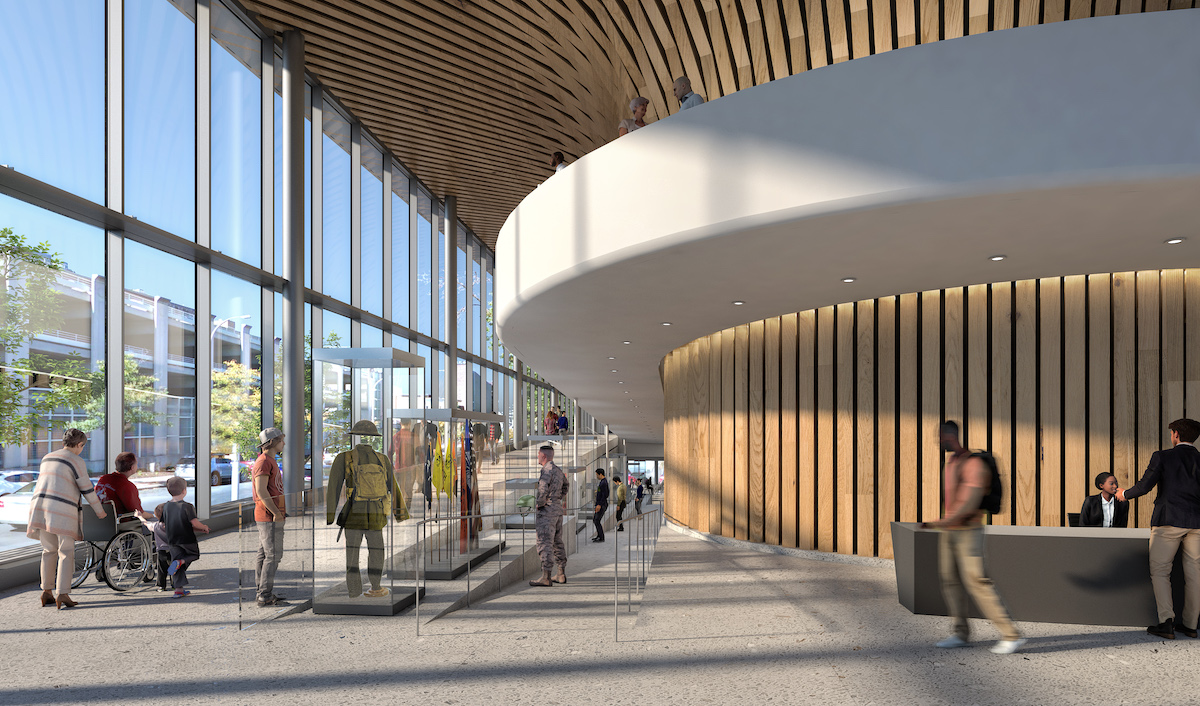Although a year away from its completion in 2020, the new National Veterans Resource Center (NVRC) is already making an impact. Located on the Syracuse University campus in New York State, the NVRC will facilitate the efforts of several on-campus veteran related organizations by combining them in the same facility for the first time. Syracuse University’s roots with the US military and veterans date to the first World War with the oldest continuously operating ROTC unit and include supporting returning WWII veterans as part of the GI Bill.
The new NVRC building, designed by SHoP Architects, features mixed materials; “If you look at the basic materials and glass, for example, there's an interesting dichotomy,” said Adamo Garritano, Senior Associate at SHoP Architects. “The upper level is quite opaque; it has this sort of camouflage look. There are a lot of references to military iconography, so it's distinguished as a more private space. The more transparent base is quite opposite. [It] connects to the campus [in that] it's quite formless. The idea is that there is a physical connection to the greater campus and this building through the transparency of the glass.”
He continued, “Then there's the iconography of the custom wood wall system that we have there [connecting the two sections]. The form really implies this idea of it spreading out and supporting this upper volume, but it's also a warm material that's intended to draw people in.”
SHoP's team chose to use thin-ply cross laminated timber (CLT), a new engineered wood product using built-up lamellae of solid wood, to build the cladding of the center portion of the NVRC which surrounds the 750 seat auditorium, to be usedby regular occupants of the NVRC andand more broadly by other Syracuse University faculty. Despite the abundance of wood-appearing products on the market today, SHoP is committed to the use of natural materials, in particular wood. The reasons can be summed up by three benefits gained from natural wood: the psychological benefits associated with biophilic design, the aesthetic and natural beauty of wood, and the environmental impact.
Biophilic Benefits
While the positive psychological impact of biophilic products—design that is made of or resembling natural material—have been widely studied, working with veterans meant taking the realities of post-traumatic stress disorder (PTSD) into consideration.
“I think the biggest factor [of using natural wood] is the biophilic warmth and natural reactions humans have to wood in general,” said Garritano.
For decades scientists and architects alike have been interested in the impact of nature in the built environment. Studies show that biophilic elements, including wood, stone, and plants, have a positive effect on people's emotional and physical well-being, as well their ability to focus and be productive.
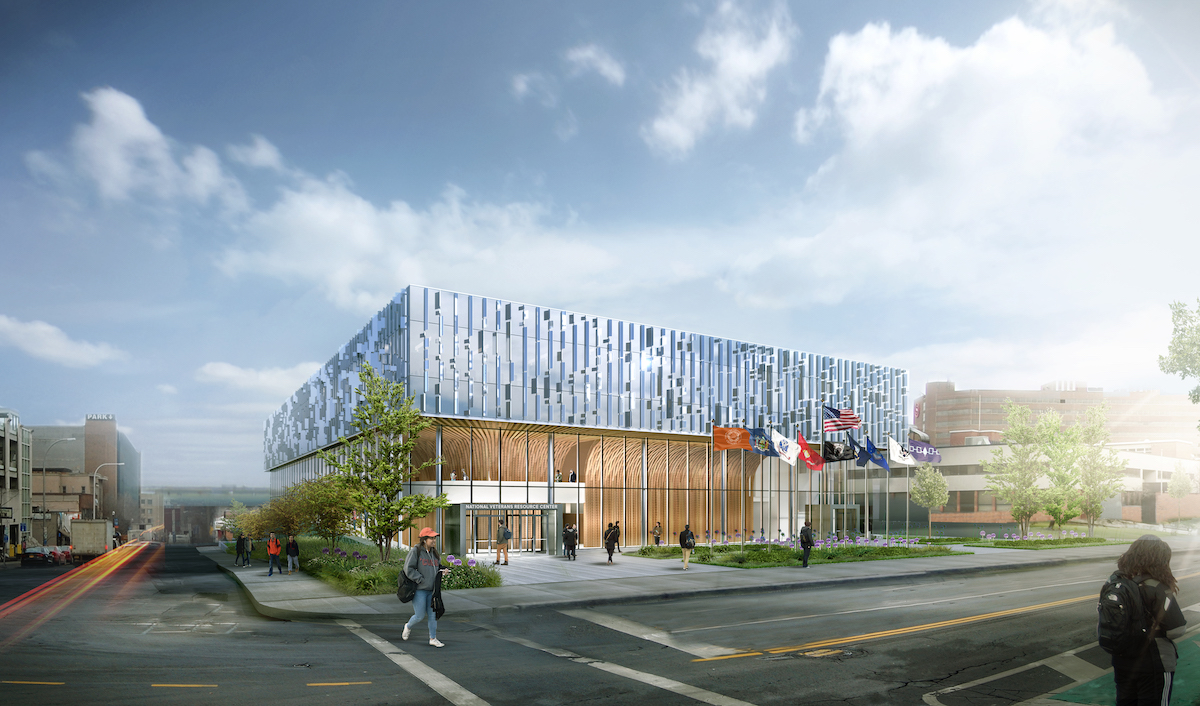 National Veterans Resource Center. Rendering courtesy SHoP
National Veterans Resource Center. Rendering courtesy SHoP
In creating a space specifically aimed at veterans and those enlisted in the military, designing with physical and mental wellness in mind is of the utmost importance. With between 11- and 20-percent of veterans returning from Operations Iraqi Freedom and Enduring Freedom being diagnosed with PTSD each year, using natural wood is more than an aesthetic option; it can provide real impact for users.
The use of wood gives one the feeling of being enveloped by the richness of nature, even within the building which also uses glass and steel. “There's this sort of complimentary composition, and the wood is the most prominent feature. [The second-floor auditorium] is a light, open, airy space. It's this idea of a sort of embracing warm, calm space, and the wood is doing most of that work.”
Aesthetic and Natural Beauty of Wood
“I think there's an authenticity [in using natural wood]. That's a theme that runs throughout the [SHoP] office beyond the use of wood. It's also how we treat a lot of our metal finishes as well. When possible, we try to stay away from painted or coated applications and speak to the natural weathering and qualities of different [materials].”
In contrast to the NVRC is one of SHoP's earliest installations: the MoMA PS1 Pavilion constructed in 2000. Entitled Dunescape, SHoP created an immersive environment built of natural wood beams. Being constrained by time and budget, the form of Dunescape appears almost primitive compared to the Syracuse NVRC building, but the use of natural wood as the primary material in creating a metaphorical connection between reality and imagination is very similar to the NVRC's auditorium growing from the university base to support the military operations and veterans utilizing the top floor.
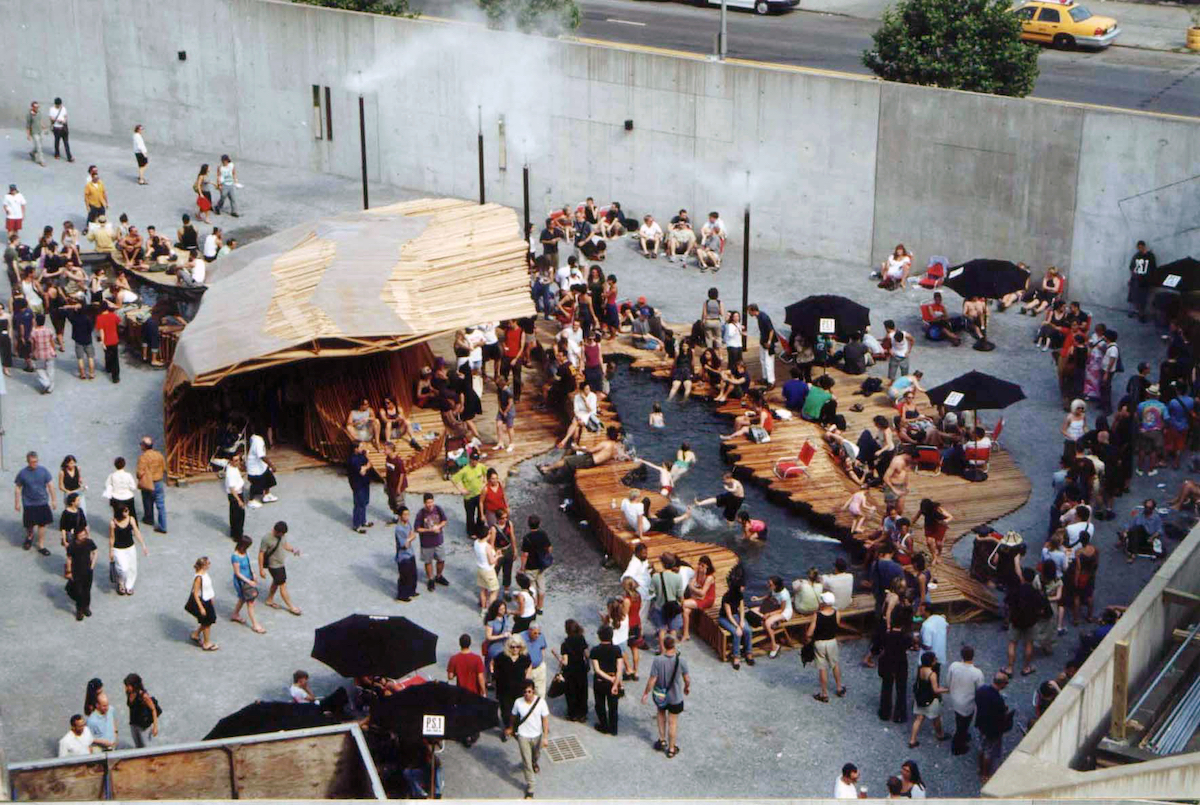 MoMA PS1 Pavilion, entitled Dunescape. Photo courtesy SHoP
MoMA PS1 Pavilion, entitled Dunescape. Photo courtesy SHoP
“If you compare the NVRC and [Dunescape], they're seemingly very different in scale, complexity and sophistication. But there is a lot of the same DNA in those projects in terms of aesthetics. There's natural connections [between the two]. Our office is really interested in the combination of process and execution as being part of the design process.”
Environmental Impact
Lastly, the impact of the design industry on sustainability and policy is an important highlight in the use of wood for Garritano. “I think there's a misunderstanding that is becoming more and more clear: using wood doesn't mean the depletion of resources necessarily.” In using wood that is sustainably harvested and managed, architects have the ability to “add value to it as a material, which ultimately influences better policy for replanting and regrowth.”
When a material is used more widely by the building and architecture industry, there is a greater possibility that manufacturers will take note to meet the needs of designers. Using sustainable wood can, in turn, increase the number of trees planted and harvested in a sustainable manner.
As Garritano continued, the growth of trees for sustainably harvested wood has a wider impact as they sequester carbon from the environment. The use of sustainably harvested wood “is probably the most impactful as a building structure, but for finishes and other materials, it certainly makes a difference as well.”
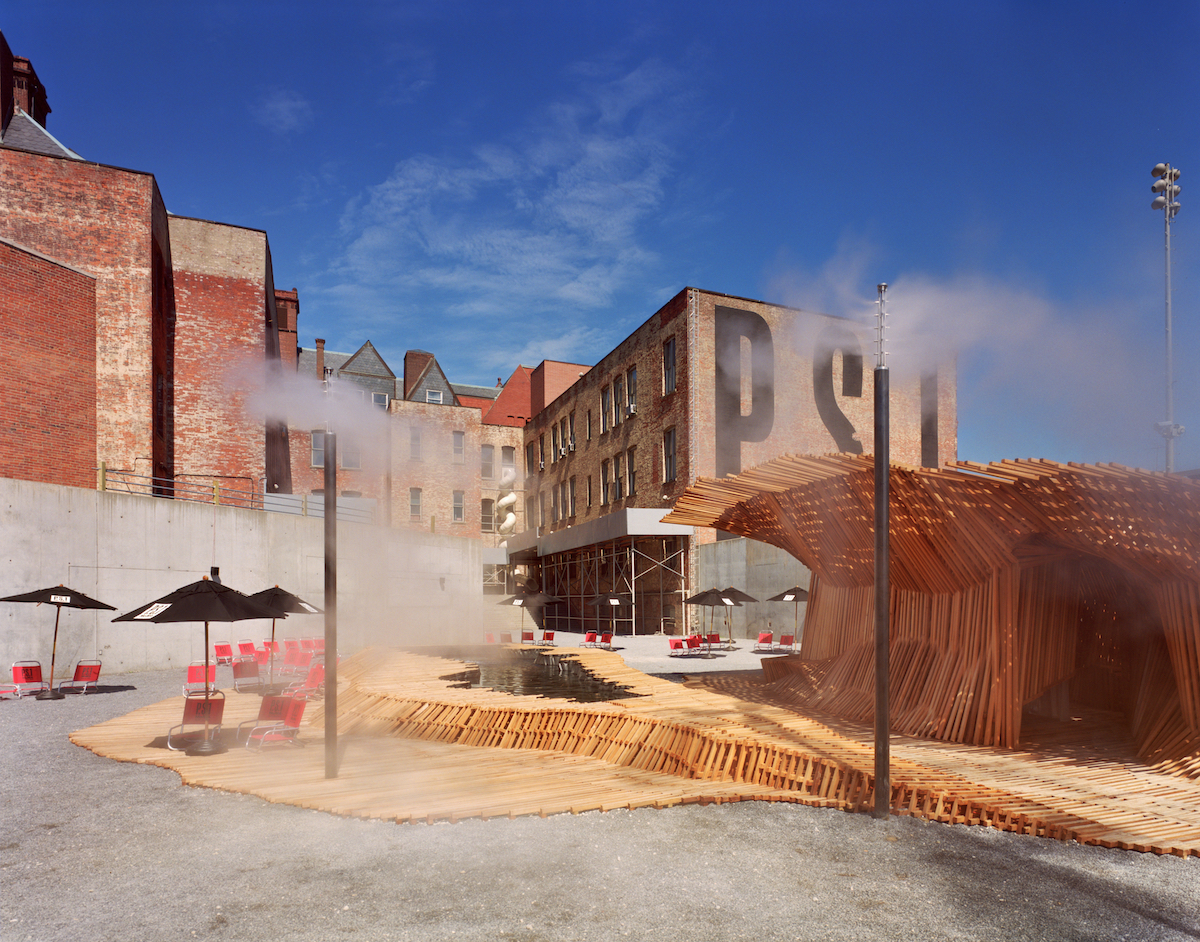 MoMA PS1 Pavilion, entitled Dunescape. Photo courtesy SHoP
MoMA PS1 Pavilion, entitled Dunescape. Photo courtesy SHoP
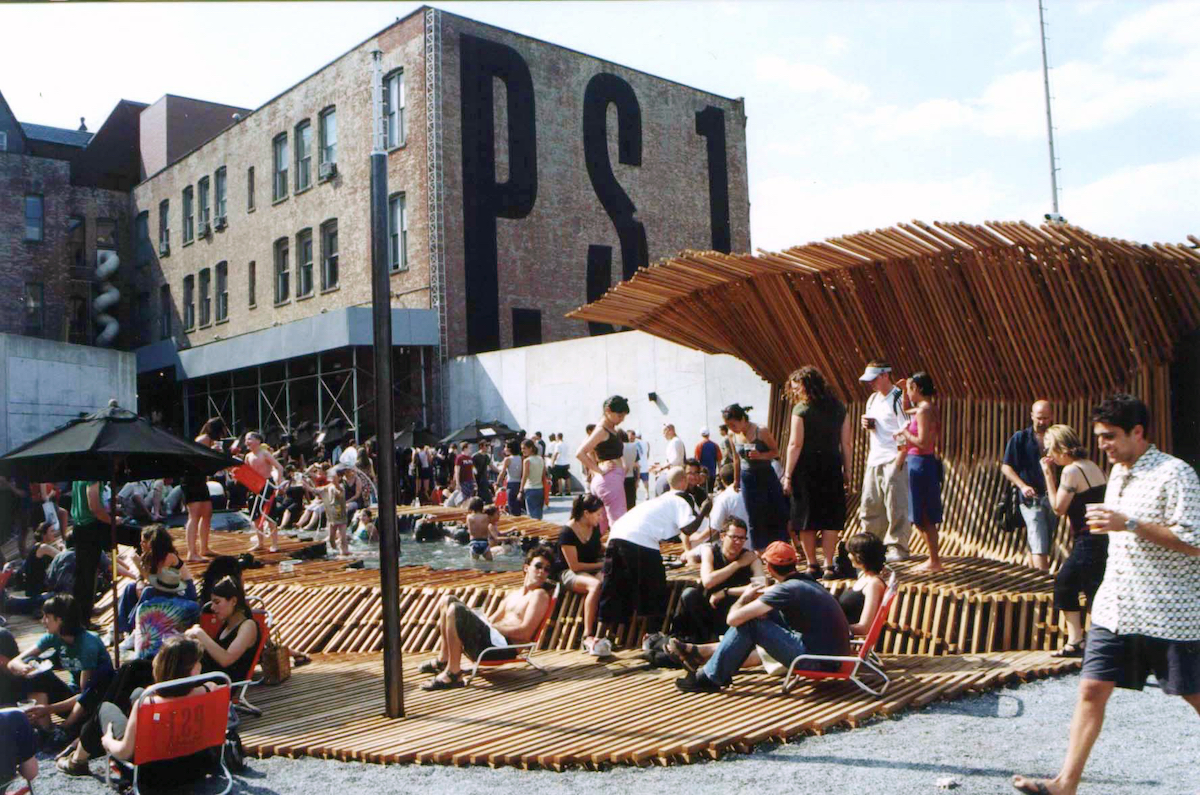 MoMA PS1 Pavilion, entitled Dunescape. Photo courtesy SHoP
MoMA PS1 Pavilion, entitled Dunescape. Photo courtesy SHoP
Related Stories
| Aug 11, 2010
New data shows low construction prices may soon be coming to an end
New federal data released recently shows sharp increases in the prices of key construction materials like diesel, copper and brass mill shapes likely foreshadow future increases in construction costs, the Associated General Contractors of America said. The new November producer price index (PPI) report from the Bureau of Labor Statistics provide the strongest indication yet that construction prices are heading up, the association noted.
| Aug 11, 2010
LEED 2009 cites FloorScore Certification as indicator of indoor air quality
The U.S. Green Building Council (USGBC) has cited FloorScore® certified flooring products as eligible for credits under the new LEED 2009 Version 3 guidelines. Reflecting the inclusion of FloorScore, the new LEED IEQ Credit 4.3 for Low-Emitting Materials has been expanded from “Carpet Systems” to “Flooring Systems” to include hard surface flooring.
| Aug 11, 2010
Southern Pine Council releases certification survey results
Recent surveys conducted by the Southern Forest Products Association (SFPA) and Random Lengths assessed the use of forest certification programs in the wood products industry and uncovered interesting results, including the fact that approximately 61% do not use a certification system and that about 60% of southern pine producers receive regular requests for certified products.
| Aug 11, 2010
Best AEC Firms of 2011/12
Later this year, we will launch Best AEC Firms 2012. We’re looking for firms that create truly positive workplaces for their AEC professionals and support staff. Keep an eye on this page for entry information. +
| Aug 11, 2010
AAMA leads development of BIM standard for fenestration products
The American Architectural Manufacturers Association’s newly formed BIM Task Group met during the AAMA National Fall Conference to discuss the need for an BIM standard for nonresidential fenestration products.
| Aug 11, 2010
Pella Corporation ranks highest in customer satisfaction
Pella Corporation has earned the prestigious J.D. Power and Associates award for “Highest in Customer Satisfaction among Window and Patio Door Manufacturers” for the third year in a row.
| Aug 11, 2010
Pella introduces BIM models for windows and doors
Pella Corporation now offers three-dimensional (3D) window and door models for use in Building Information Modeling (BIM) projects by architects, designers, and others looking for aesthetically correct, easy-to-use, data-rich 3D drawings.
| Aug 11, 2010
AAMA developing product-based green certification program for fenestration
The American Architectural Manufacturers Association is working on a product-based green certification program for residential and commercial fenestration, the organization announced today. AAMA will use the results of a recent green building survey to help shape the program. Among the survey's findings: 77% of respondents reported a green certification program for fenestration would benefit the product selection process for their company.
| Aug 11, 2010
AIA Course: Enclosure strategies for better buildings
Sustainability and energy efficiency depend not only on the overall design but also on the building's enclosure system. Whether it's via better air-infiltration control, thermal insulation, and moisture control, or more advanced strategies such as active façades with automated shading and venting or novel enclosure types such as double walls, Building Teams are delivering more efficient, better performing, and healthier building enclosures.
| Aug 11, 2010
World's tallest all-wood residential structure opens in London
At nine stories, the Stadthaus apartment complex in East London is the world’s tallest residential structure constructed entirely in timber and one of the tallest all-wood buildings on the planet. The tower’s structural system consists of cross-laminated timber (CLT) panels pieced together to form load-bearing walls and floors. Even the elevator and stair shafts are constructed of prefabricated CLT.


